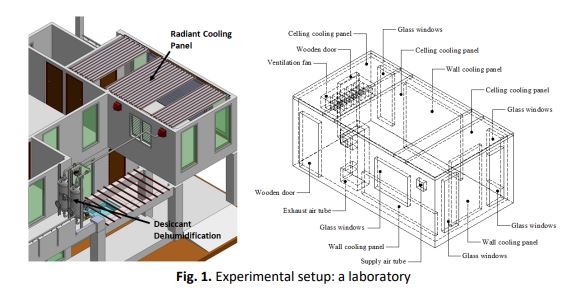Performance Improvement of the Radiant Cooling Panel Using Pressure-Vacuum Swing Adsorption with A Solid Desiccant Dehumidification
DOI:
https://doi.org/10.37934/arfmts.95.2.6271Keywords:
Desiccant dehumidifier, radiant cooling panel, experiment, computational fluid dynamics, thermal comfort, predicted mean votedAbstract
A growing environmental Impact of global warming and rapidly increasing cost of the electrical energy cause researchers in the field of refrigeration and air conditioning to develop the sustainable cooling technologies. The aim of this study was to investigate and design a radiant cooling panel with solid desiccant dehumidifier which was suitable for tropical climate to achieve thermal comfort. The influence of an interior ventilation fan to thermal comfort assessment was also examined. The designed system with CFD (Computation fluid dynamics) simulation used ANSYS software to compare with the measured data. The total area of the ceiling and wall radiant cooling panels were 16.83 m2 and 16.32 m2 with 26.28 L/min of supplied water by the cooling tower. The solid desiccant dehumidifier was the pressure-vacuum swing adsorption technology with containing 20 kg of silica-gel. The flow rate of supply air was approximately 90 kg/h. The results indicated that the PMV (Predicted mean voted) could be improving with the uses of cooling panel with dehumidifier during the day. The lower temperature and humidity ratio can improve thermal comfort. The patterns of temperature, the relative humidity and the PMV from CFD simulation were in the same agreement with the experimental results. In the case of the ventilation fan installed in the radiant cooling panel with dehumidifier, the average value of predicted mean vote was -0.2. Consequently, the PPD (Predicted percentage dissatisfied) was reduced to 6.2%. The daily electric power consumption was 5.94 kWh which was lower than the conventional air conditioning system about 16.27%.
Downloads

































